Malabar Hill’s elevated micro-forest trail brings nature to Mumbai’s urban experience
An elevated trail in the Malabar Hill neighbourhood is where nature meets design in the ‘urban jungle’ of Mumbai
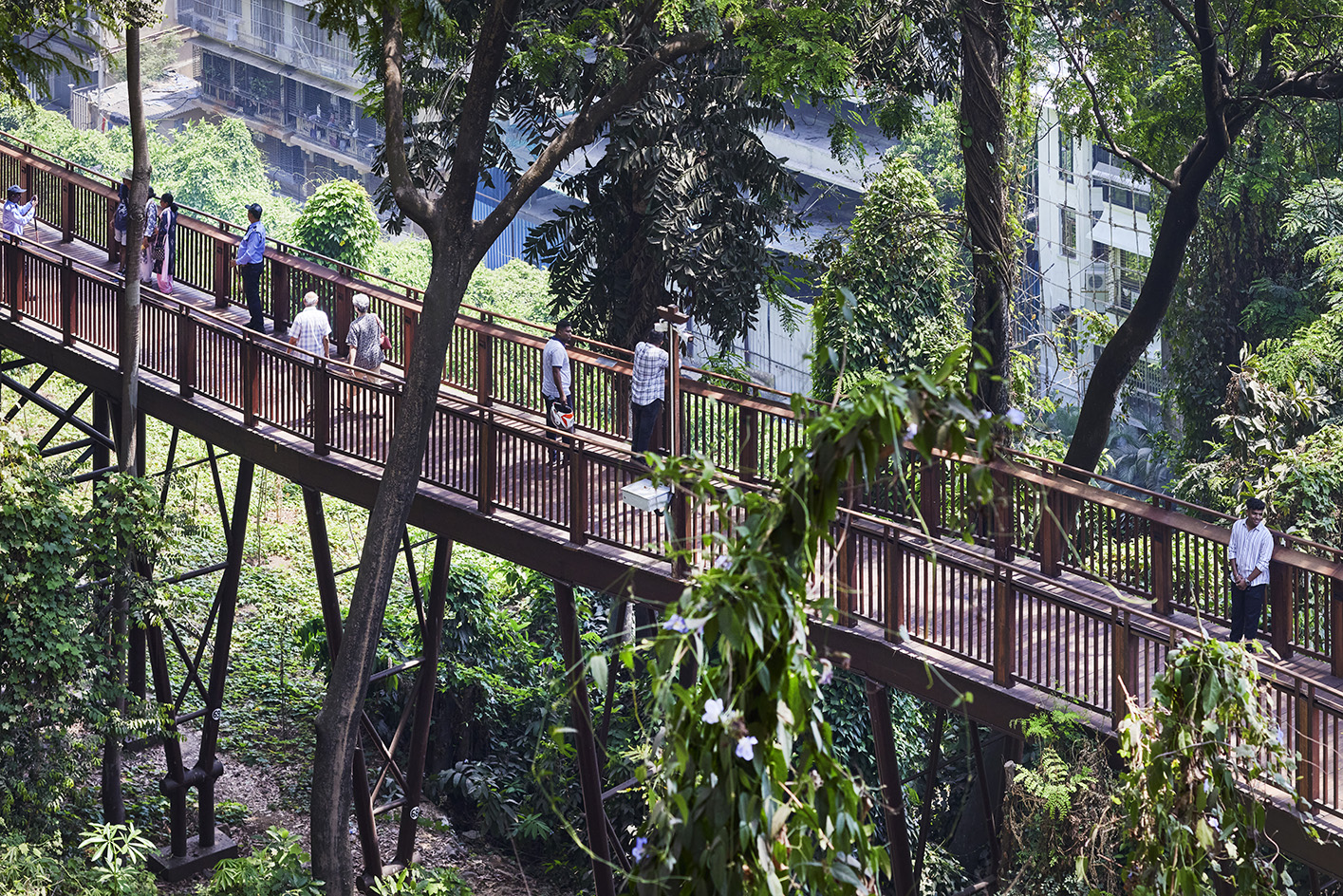
'It was a forgotten and neglected part of the city that hardly anybody would go to,' says Rahul Kadri, partner and principal at Mumbai practice IMK Architects, of a 12.5-acre piece of lush tropical forest in the Malabar Hill neighbourhood of the Indian megalopolis. One of the city’s last remaining natural ecosystems, it now features an elevated walkway from which to admire its flora and fauna, enjoy panoramic views of the city and get some relief from the 'concrete jungle' that is one of India’s largest cities.
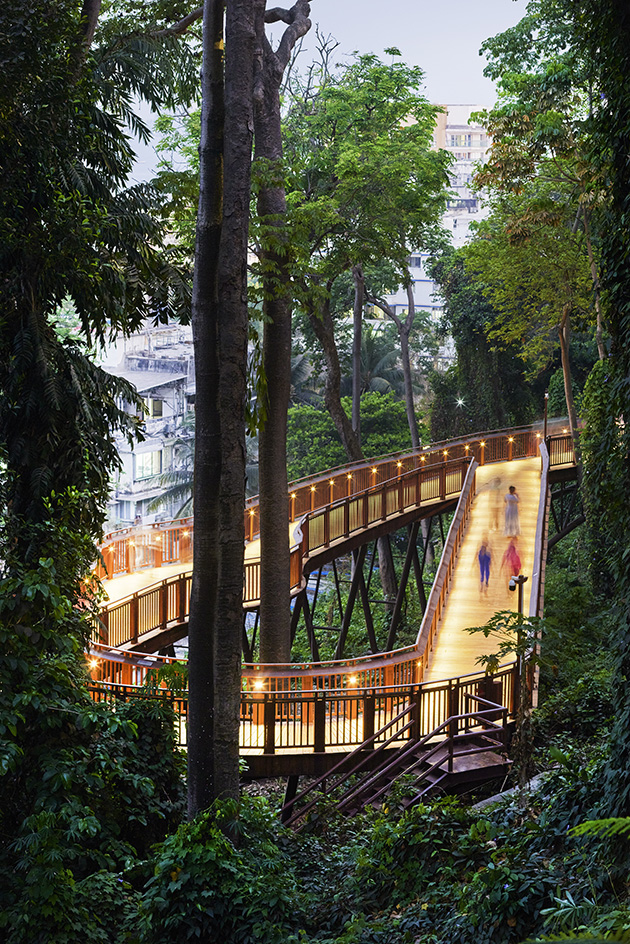
Explore Malabar Hill's elevated forest trail in Mumbai
Designed by Kadri to follow the path of older trails at ground level, the Malabar Hill Elevated Nature Trail is made out of timber for its deck and balustrades and supported by epoxy-coated V-shaped structural steel columns. As you walk its 482m path you might spot birds such as kingfishers, bulbuls, and parakeets and enjoy unusual aerial perspectives of more than 100 species of tree, including mango, coconut, jackfruit, almond and gulmohar trees. Though the views are unique at every point, the most memorable might just be those of Mumbai’s famous Girgaon Chowpatty Beach and the city coastline and Arabian Sea beyond afforded from the observation point on one side.
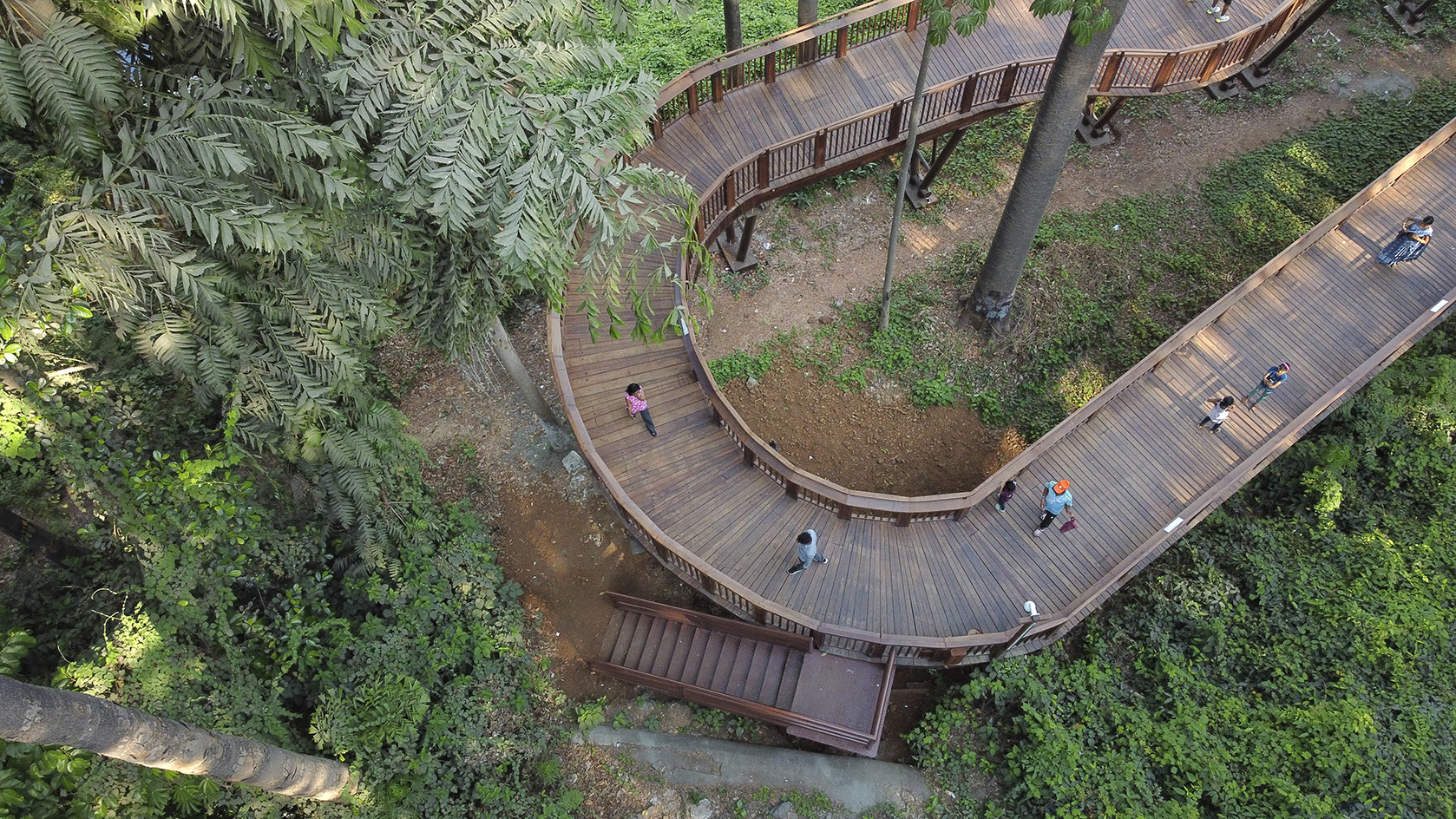
Kadri feels particularly strongly about this project as he remembers spending many happy hours roaming this forest with his dogs as a teenager back in the 1970s. By the 1990s the area was being used for liquor brewing and drug-consumption he says, and had become a dumping ground for rubbish and construction waste. 'It became a dark underbelly in the heart of what is one of Mumbai’s most exclusive neighbourhoods.' Eventually the local government department that owns the land sealed it off.
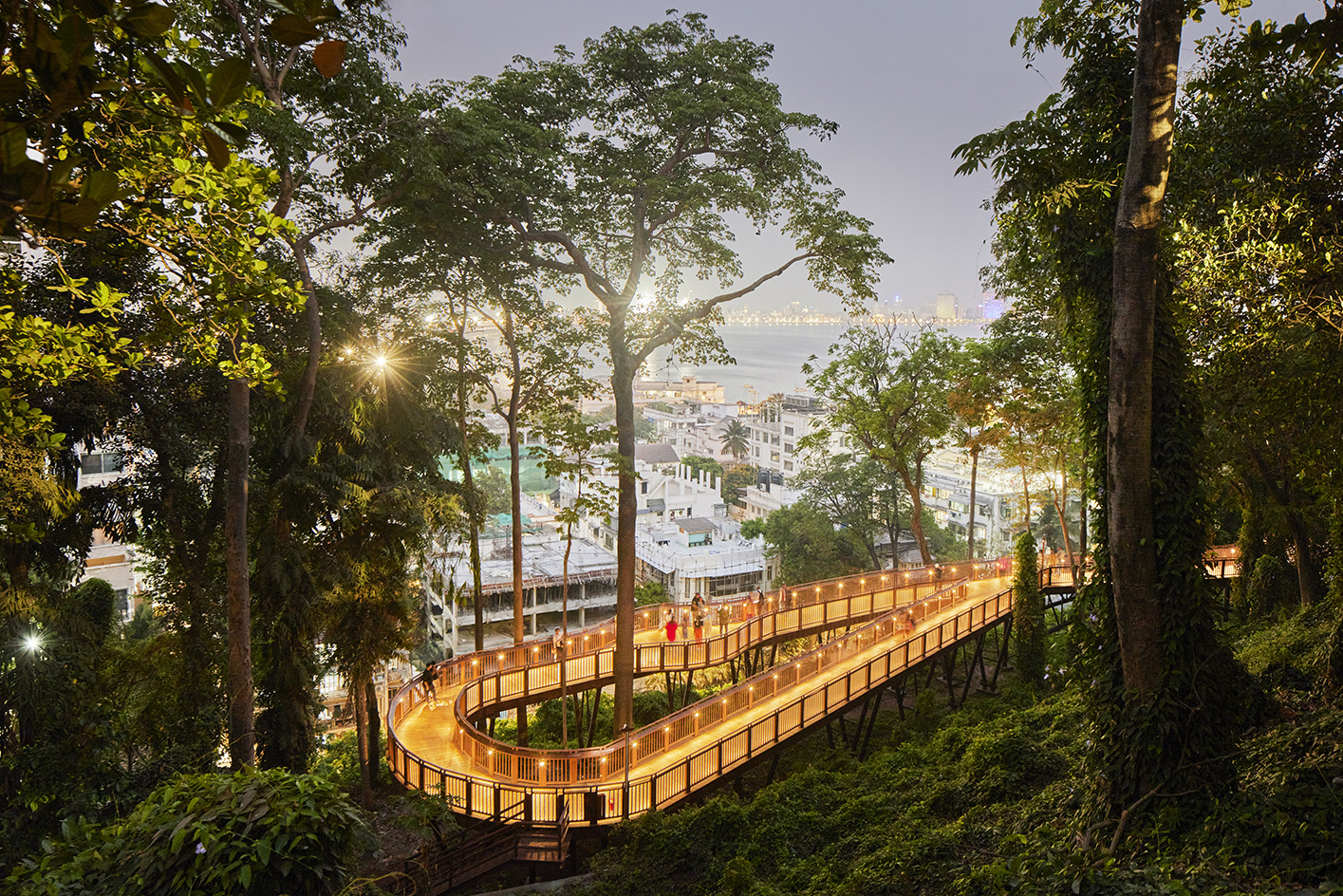
It was during the first Covid lockdown that Kadri and his wife popped through a gap in the fence and rediscovered this splendid micro forest. 'She was amazed by its beauty and her amazement rekindled a desire in me to share it with more people,' says Kadri. He set about pitching it as a pro bono project to the local government (or BMC, Brihanmumbai Municipal Corporation).
He got the nearby Nepeansea Road Citizens’ Forum, of which he is chairperson, on board and enlisted the support of leading steel manufacturer JSW Steel and arranged to meet the local government tourism and environment minister at the time, Aaditya Thackeray. 'It’s rare that the stars align with proposals like these, but he understood what we were trying to do right away,' says Kadri.
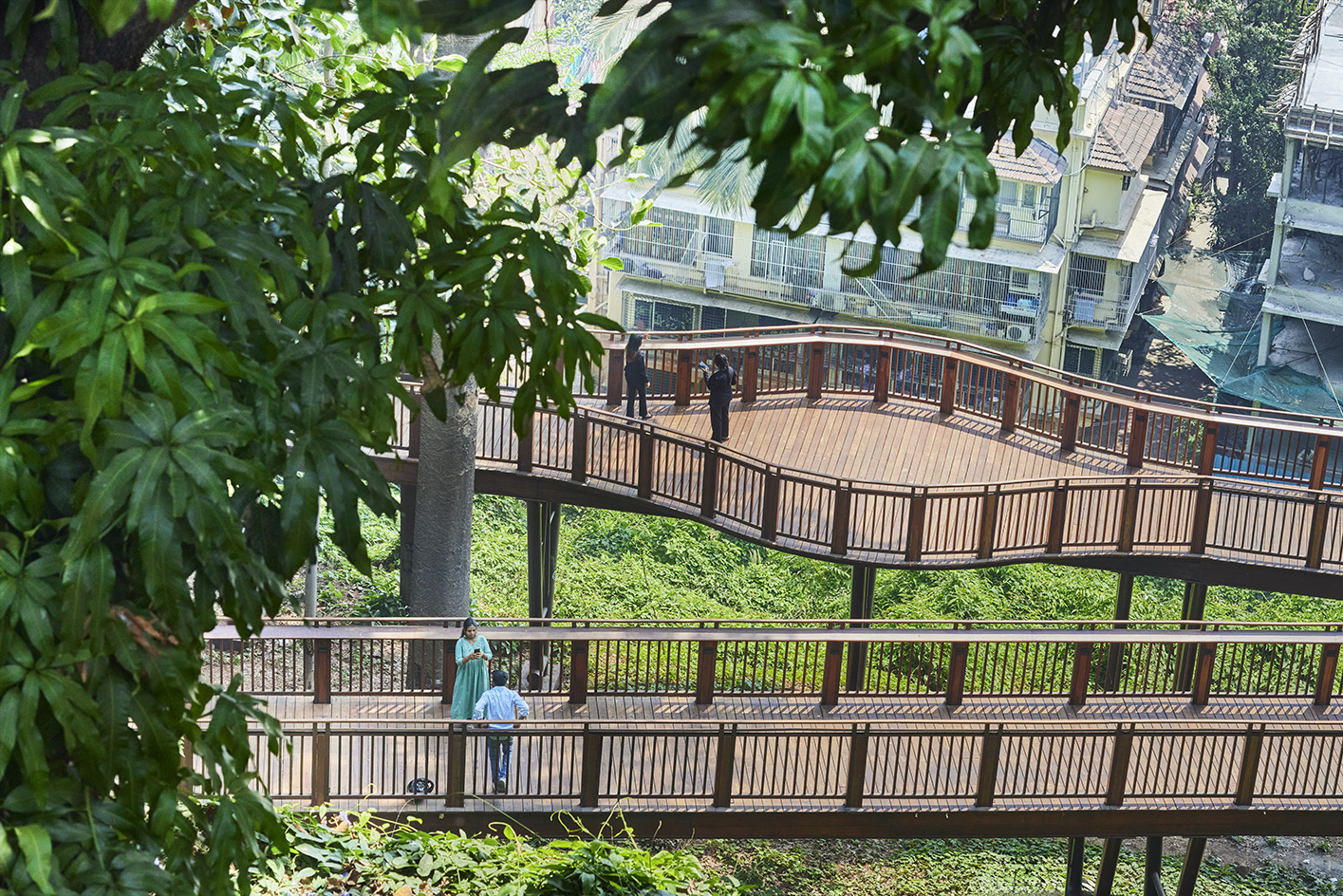
IMK architects’ elevated timber-and-steel design wisely keeps disturbance to the forest floor and surrounding wildlife to a minimum. 'We were also very careful to light the walkway in such a way that no light spills into the forest,' Kadri continues. Moreover, the timber used for the walkway is a sustainably grown Indonesian Teak from Kerala, which 'will just have to be oiled once a year' and merges almost seamlessly into the forest landscape.
In order to keep the experience as nature-oriented as possible, as well as fund some of the trail's maintenance, entrance to the walkway is ticketed at 25 rupees (£0.21) for Indians and 100 rupees (£0.85) for foreigners for a one-hour slot, and limited to 200 people at a time. 'Initially the government was looking at 600 people per slot but we managed to convince them that people were going into a forest so the atmosphere should be serene and not crowded,' says Kadri.
Receive our daily digest of inspiration, escapism and design stories from around the world direct to your inbox.
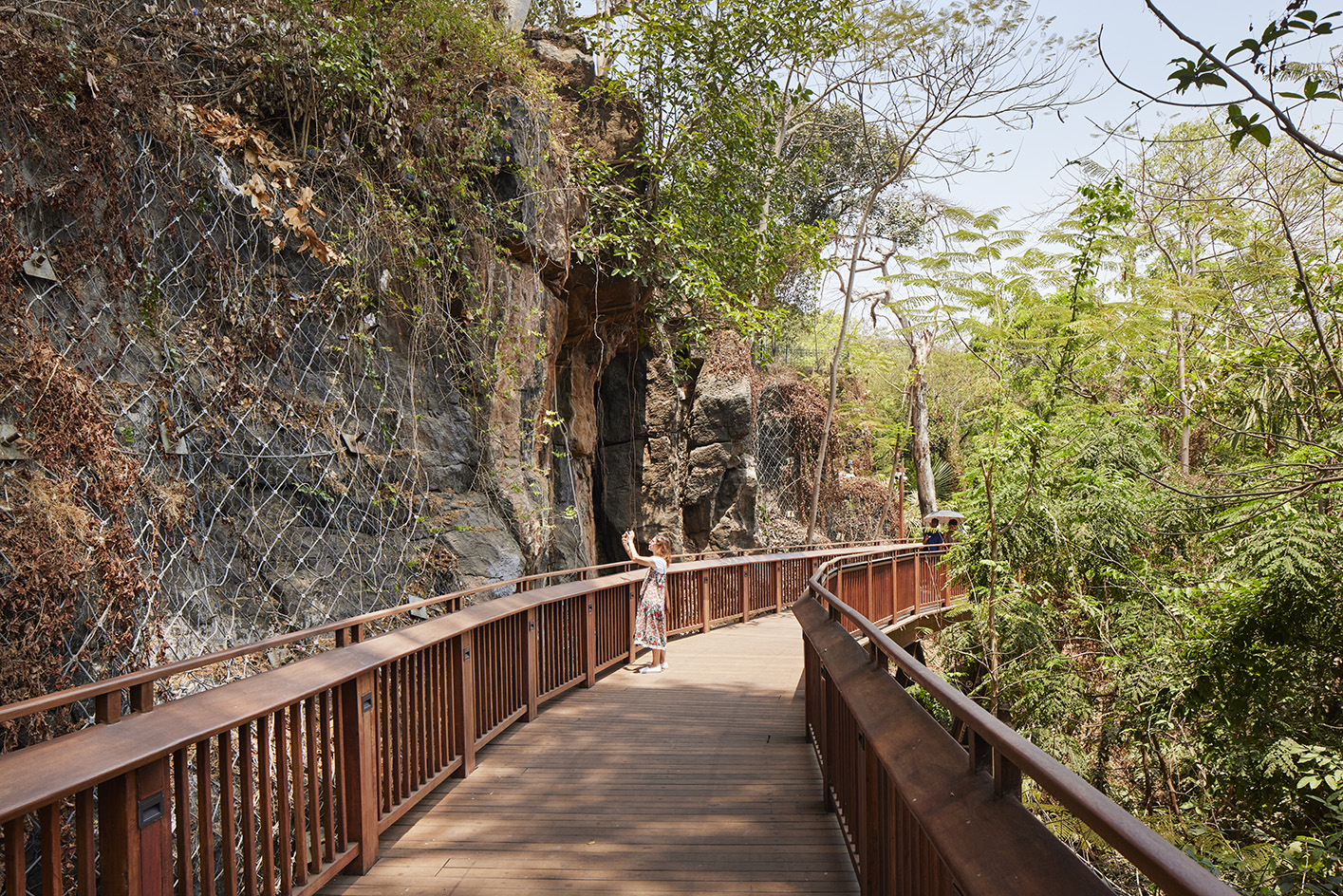
The feedback so far has been overwhelmingly positive with people making the trip from other cities and school and architect groups also visiting. Despite being open from 5am to 9pm, the walkway has been so popular that 'it’s almost impossible to get a ticket at short notice, you have to book at least a week in advance’, says Kadri. ‘A few people have visited and said, “there’s nothing there”,’ he continues with a smile, adding ‘I think they expected more manmade features.’ But any extravagant extras or bells and whistles were purposely eschewed for a more aesthetically pleasing – and affordable – minimalism.
Plans to add a glass-bottomed observation deck, for instance, or make a complete loop or even two complete loops, were done away with, given the expense and greater potential, with the latter, for disturbing the forest floor, given the steeper slopes involved. The glass-bottomed deck also didn’t make sense because the walkway isn’t really high enough (its maximum height is 5m) to warrant it. And Kadri felt it would take the focus away from what mattered. 'When we designed the walkway, we said it should be as simple as it can be, so that it is just about enjoying the forest.'
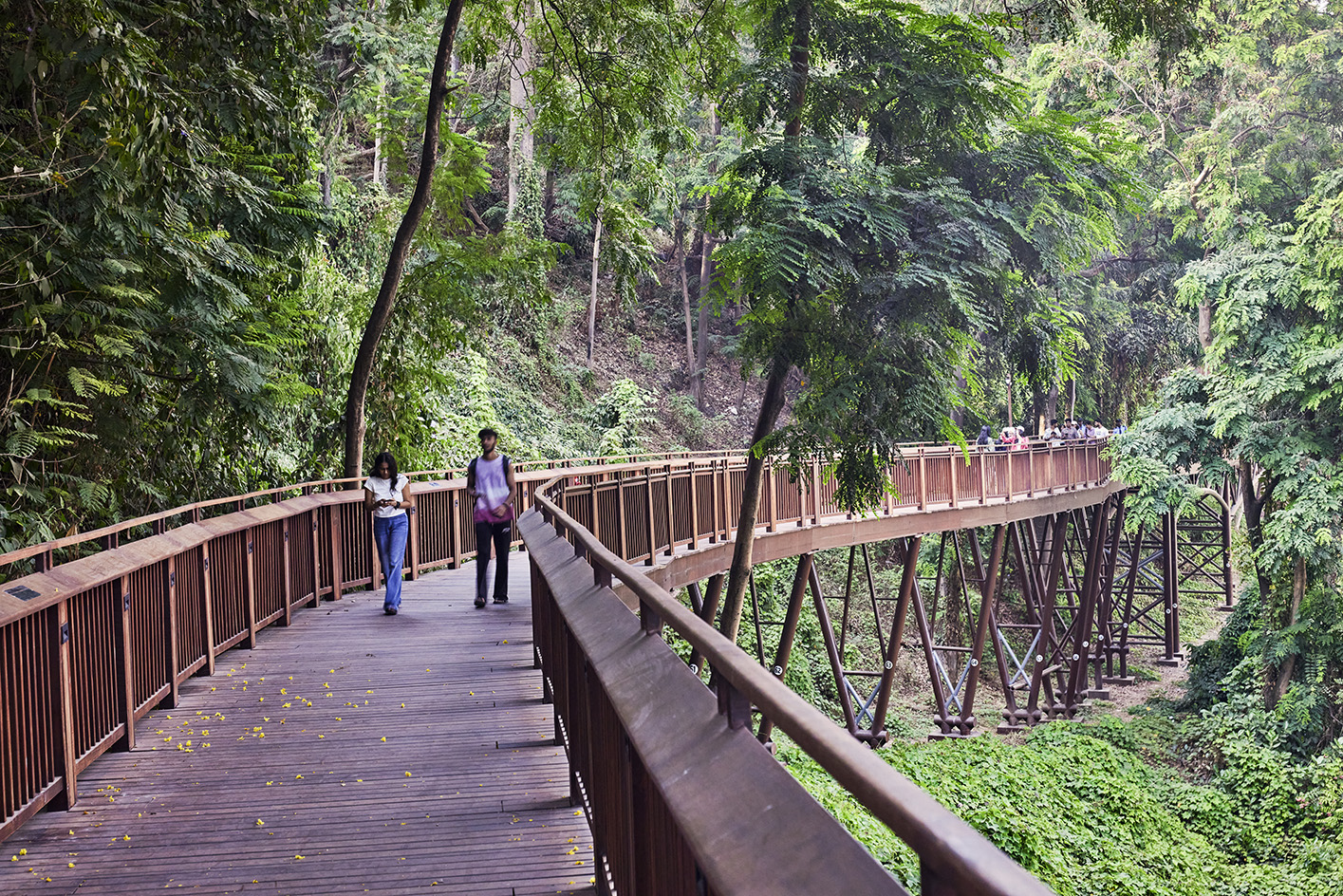
In the three months it has been open, the new walkway has also sparked a lot of interest and talk about the need for more access to green spaces and for conserving living ecosystems in the city. 'Even the government is asking us, where else can we do this?' says Kadri. In fact, the practice is in the initial phase of doing something similar in a 75-acre forest on a hill in Pimpri-Chinchwad, 'one of the most industrialised cities in the state,' located just 150km southwest of Mumbai. The Malabar Hill Elevated Nature Trail looks set to become one of those rare architectural projects that isn’t just successful in its own right, but that leads to a demand for other nature-led (design) experiences, as well as a greater understanding of their value.
Giovanna Dunmall is a freelance journalist based in London and West Wales who writes about architecture, culture, travel and design for international publications including The National, Wallpaper*, Azure, Detail, Damn, Conde Nast Traveller, AD India, Interior Design, Design Anthology and others. She also does editing, translation and copy writing work for architecture practices, design brands and cultural organisations.
-
 RBW EV brings a much-loved classic sports car aesthetic into the modern era
RBW EV brings a much-loved classic sports car aesthetic into the modern eraThe RBW Roadster and GT hark back to a golden age of sports car design. Under the skin, these British-built machines feature bespoke all-electric running gear
-
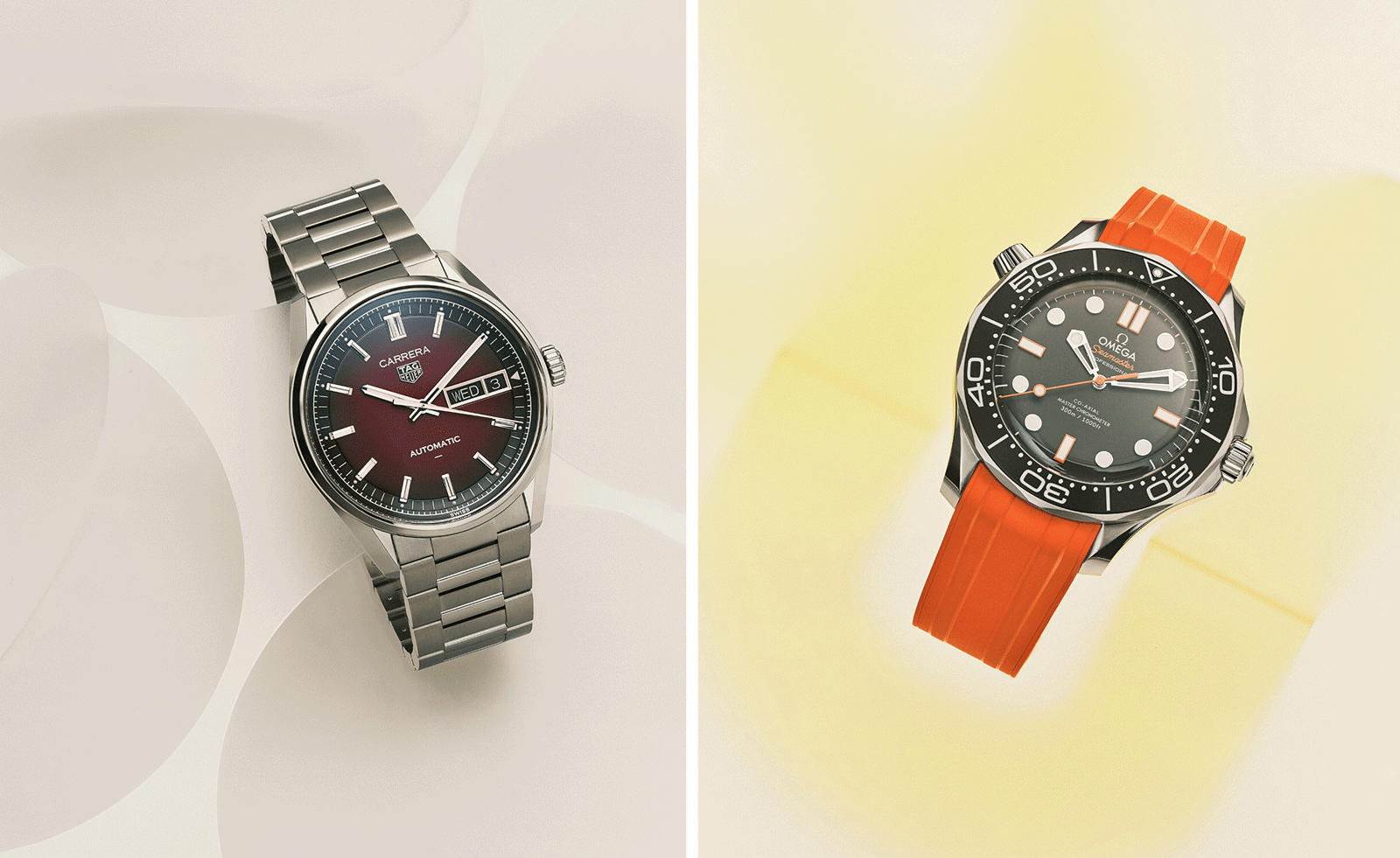 Add a pop of colour to your wrist this season with these bold watches
Add a pop of colour to your wrist this season with these bold watchesBrightly coloured watches, from Rolex, Omega, Patek Philippe and more, are just the thing for the winter season
-
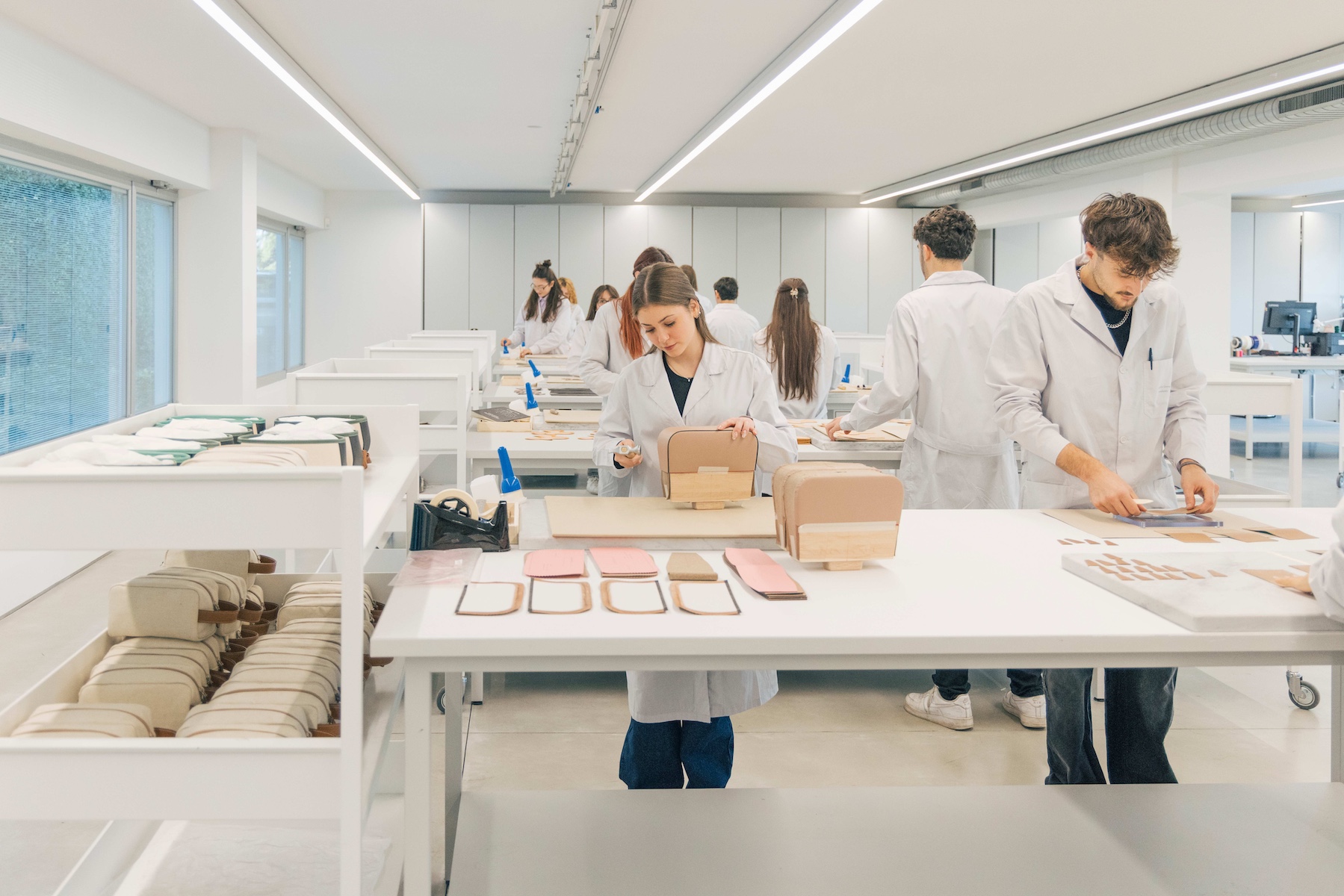 At its academy, Prada sets an agenda for the future: ‘Technology cannot replace the ability to work with your hands’
At its academy, Prada sets an agenda for the future: ‘Technology cannot replace the ability to work with your hands’Wallpaper* takes a trip to the Prada Group Academy in Scandicci, Tuscany, where Prada CEO Andrea Guerra and CMO Lorenzo Bertelli outline the future of Italian craft on the institution’s 25th anniversary
-
 The Architecture Edit: Wallpaper’s houses of the month
The Architecture Edit: Wallpaper’s houses of the monthFrom wineries-turned-music studios to fire-resistant holiday homes, these are the properties that have most impressed the Wallpaper* editors this month
-
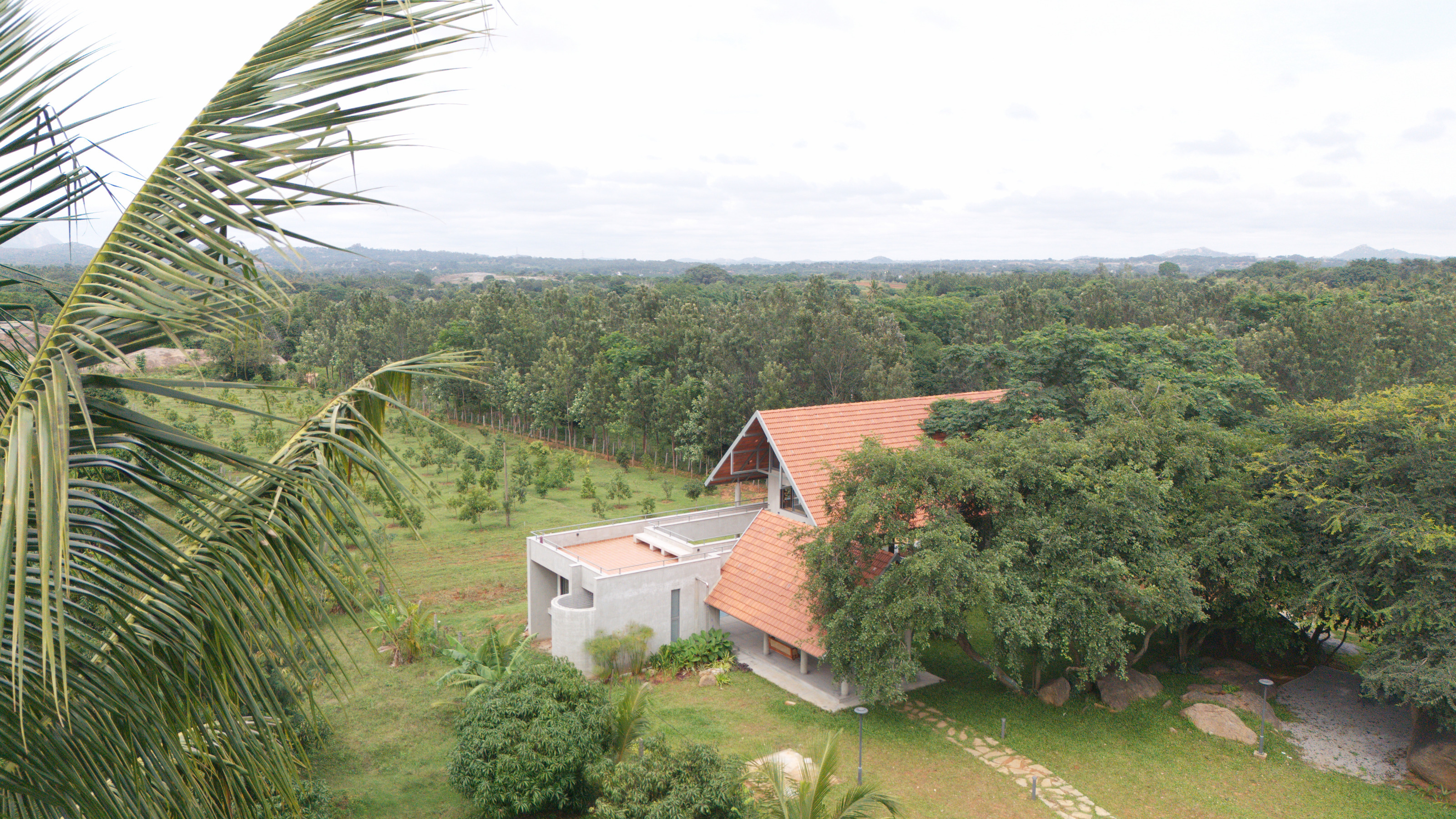 A refined Indian country residence reimagines the farmhouse
A refined Indian country residence reimagines the farmhouseSet among Karnataka’s rolling fields and forest, House by the Grove by Taliesyn Design & Architecture combines modern materials with an open approach to the elements
-
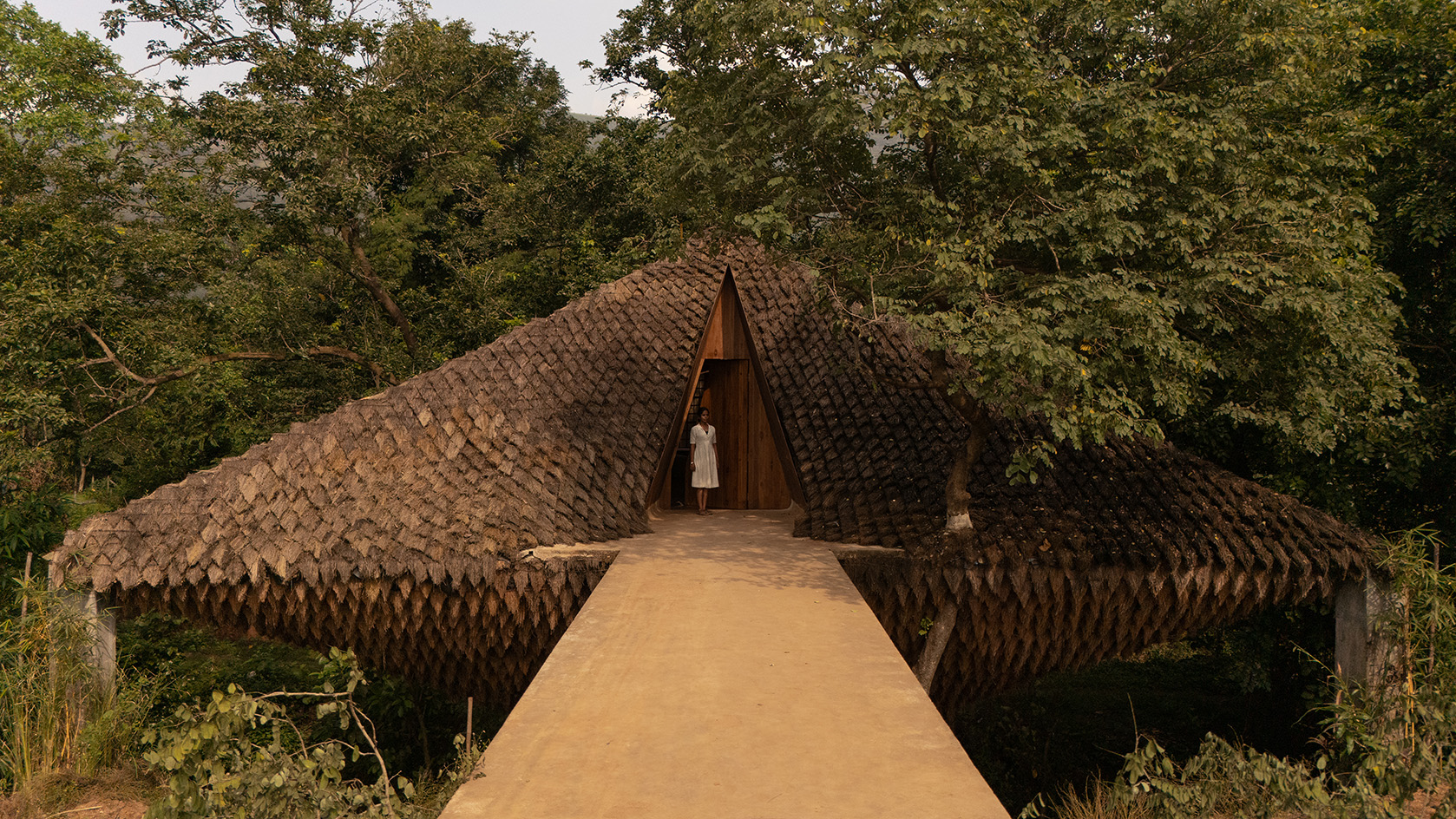 Half bridge, half home: Wallmakers’ latest project takes architecture to daring new heights
Half bridge, half home: Wallmakers’ latest project takes architecture to daring new heightsHovering above a forest stream in Maharashtra, Bridge House in Maharashtra, India pushes the limits of engineering and eco-conscious design
-
 The Architecture Edit: Wallpaper’s houses of the month
The Architecture Edit: Wallpaper’s houses of the monthFrom Malibu beach pads to cosy cabins blanketed in snow, Wallpaper* has featured some incredible homes this month. We profile our favourites below
-
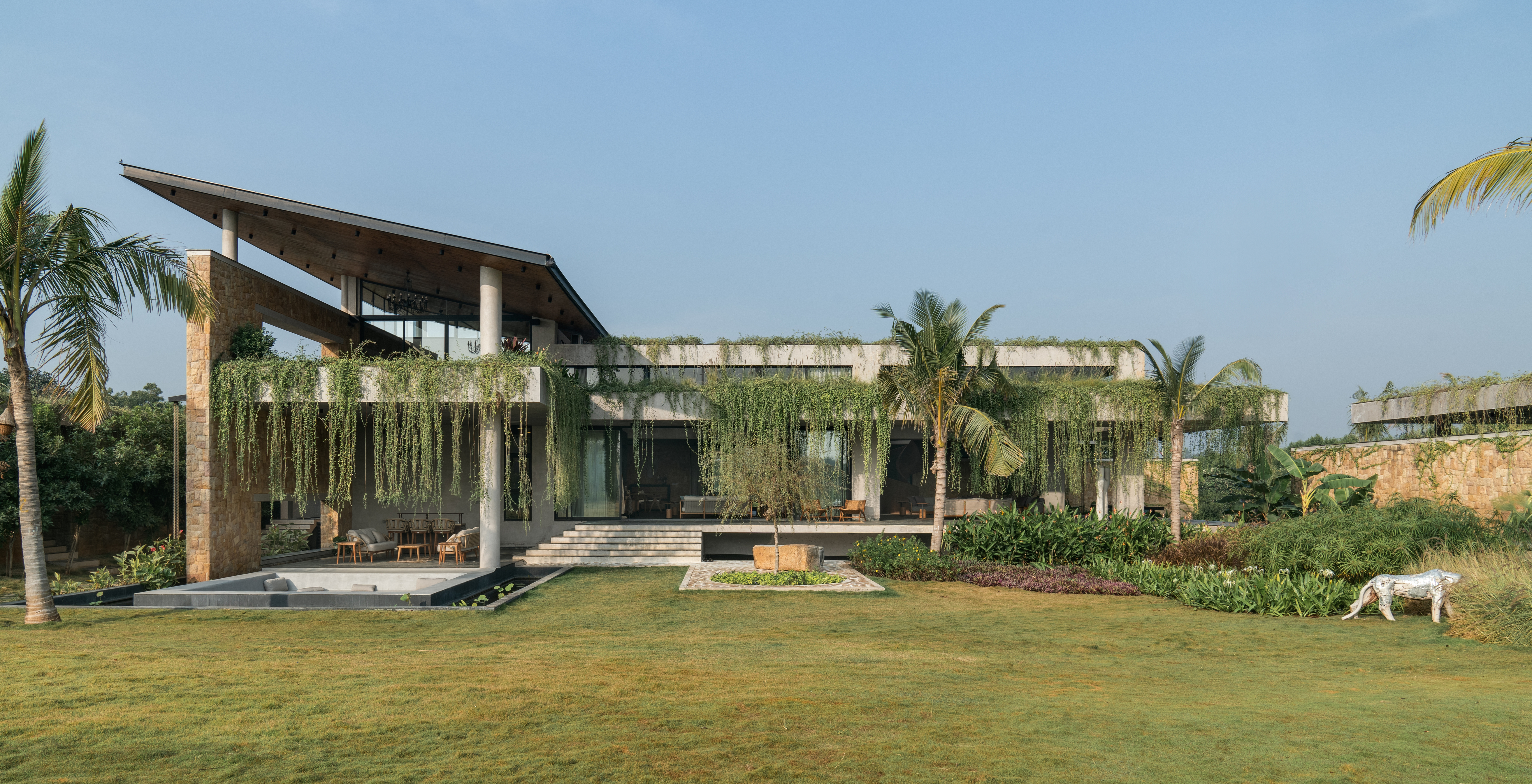 Cascading greenery softens the brutalist façade of this Hyderabad home
Cascading greenery softens the brutalist façade of this Hyderabad homeThe monolithic shell of this home evokes a familiar brutalist narrative, but designer 23 Degrees Design Shift softens the aesthetic by shrouding Antriya in lush planting
-
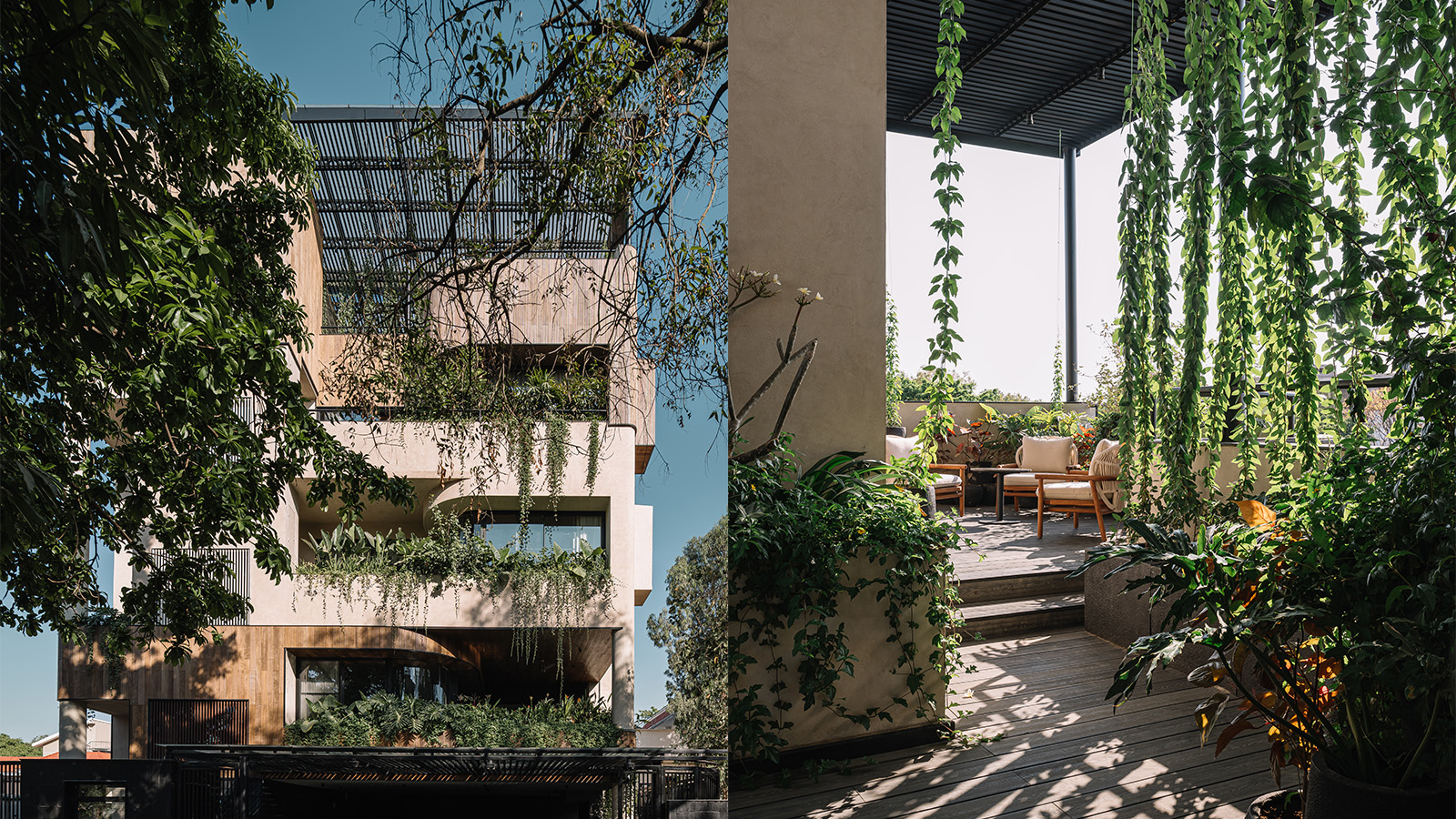 A lush Bengaluru villa is a home that acts as a vessel for nature
A lush Bengaluru villa is a home that acts as a vessel for natureWith this new Bengaluru villa, Purple Ink Studio wanted gardens tucked into the fabric of the home within this urban residence in India's 'Garden City'
-
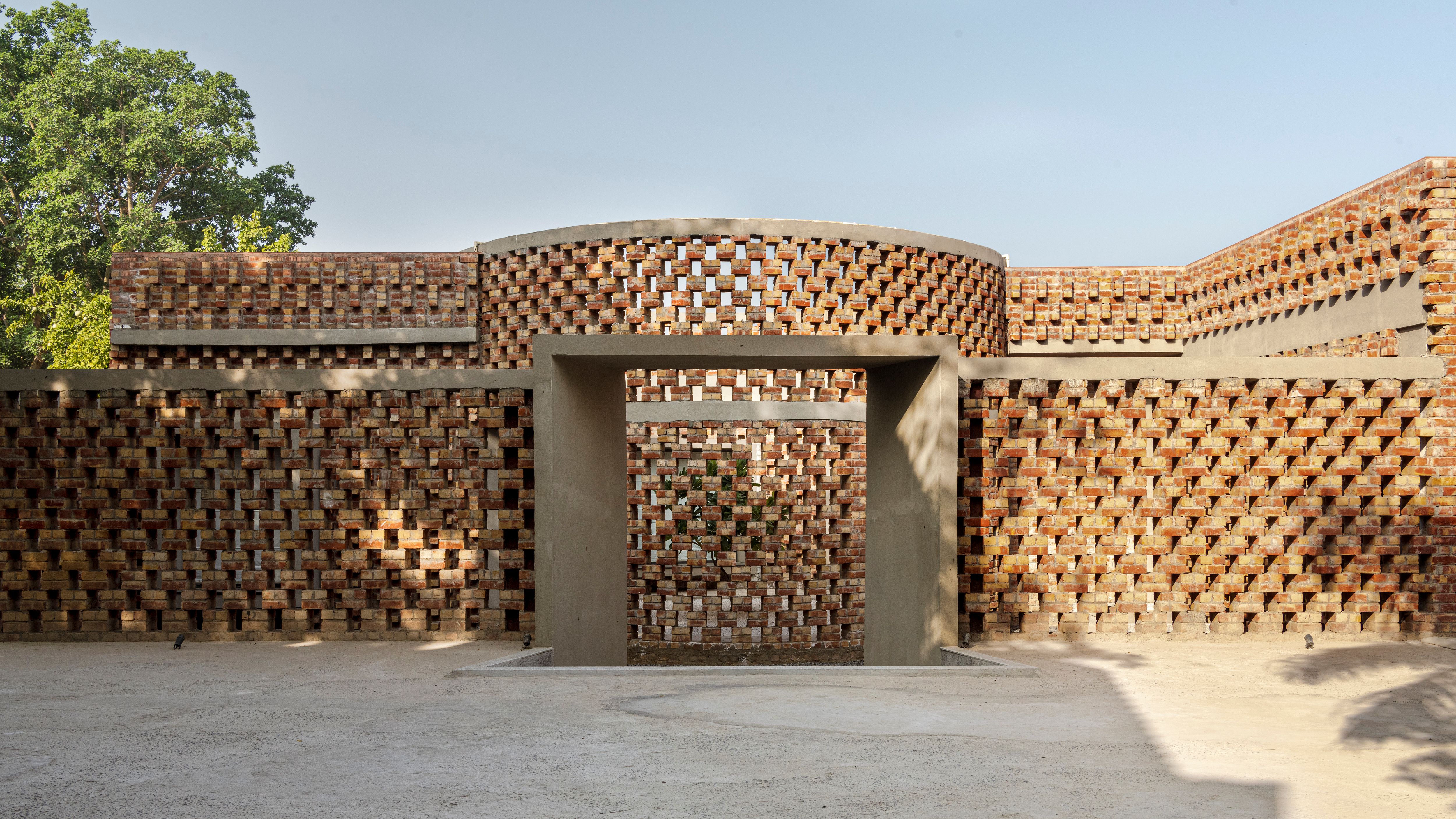 Brick by brick, a New Delhi home honours India’s craft traditions
Brick by brick, a New Delhi home honours India’s craft traditionsRLDA Studio's Brick House works with the building block's expressive potential to create a dynamic residence with a façade that reveals patterns that change with the sun and shadows
-
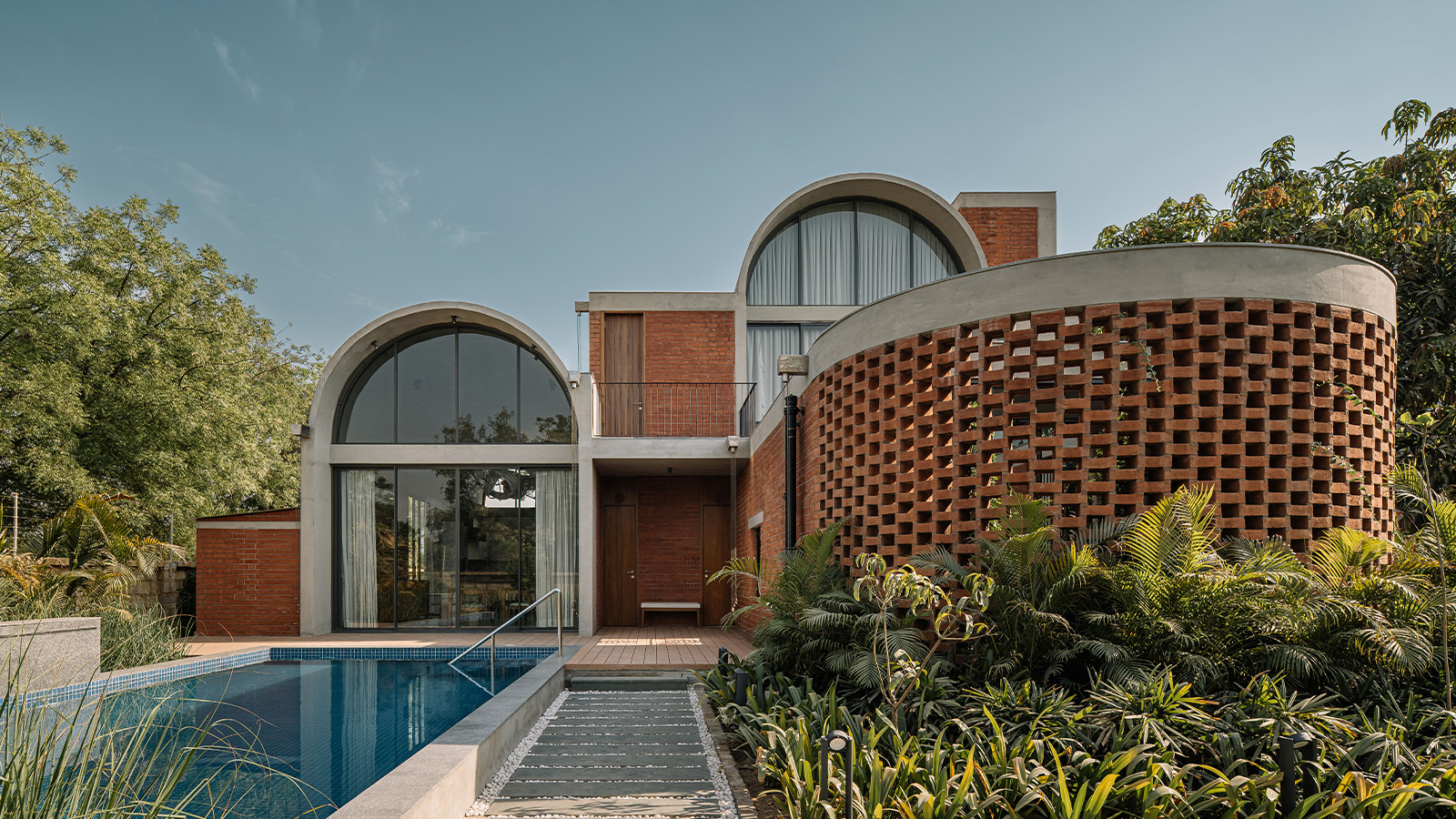 Surrounded by mango trees and frangipani, an Ahmedabad home is a soothing sanctuary
Surrounded by mango trees and frangipani, an Ahmedabad home is a soothing sanctuaryAhmedabad home Teen Vaults, designed by Vaissnavi Shukl, is a family residence grounded in materiality and bold architectural language